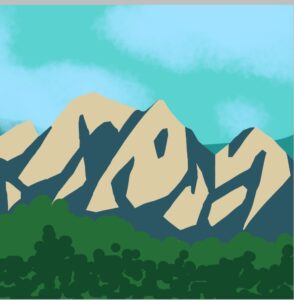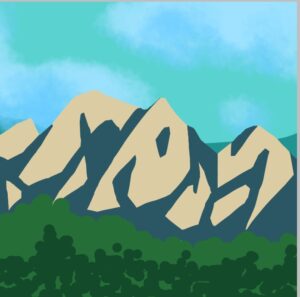1. Decide the direction of light

When drawing the shadow of a mountain, the first thing to consider is the direction of light. Depending on where the light hits, it will determine which part of the mountain will ha ve a shadow. If the sun is on the right, the shadow will be on the left side of the mountain. Conversely, if the sun is on the left, the shadow will be on the right side. By deciding the direction of the light, you can clearly determine where to draw the shadow, and the whole picture will look natural.
2. Decide the range of the shadow

Next, roughly decide the range of the shadow. The shadow spreads along the slope of the mountain, but not all of it will be a uniform shadow. There are parts where the shadow is darker and parts where it is lighter according to the unevenness of the mountain. For example, the shadow will be darker on steep slopes and rocks, and lighter on gentle parts. When deciding the range of the shadow, pay attention to the topography of the mountain.
3. Adjust the darkness of the shadow

When drawing a shadow, it is important to adjust the darkness rather than just painting the black parts. The shadows that are not illuminated will be dark, but there may be a small amount of light reflected from the other side of the mountain. Therefore, by making the edges of the shadow a little lighter, a three-dimensional effect will be created. Also, by varying the darkness of the shadow depending on the location, a realistic texture will be created.
4. Be aware of the surface of the mountain

Mountains are not smooth, but are uneven with rocks, trees, and grass. Therefore, shadows are not constant, and they need to be drawn according to the unevenness of the mountain's surface. Dark shadows are created in the shadows of large rocks and in areas where trees are gathered, but there are few shadows in grassy areas and gentle slopes. Drawing shadows while being aware of the natural surface characteristics of the mountain will result in a more realistic picture.
Summary

When drawing the shadow of a mountain, it is important to carefully consider the direction of the light and adjust the range and darkness of the shadow according to the terrain and surface characteristics of the mountain. By drawing shadows well, the three-dimensionality and depth of the mountain will be emphasized, and you can express a realistic landscape. It may seem difficult at first, but if you practice while observing how the shadows are applied, you will gradually get the hang of it.